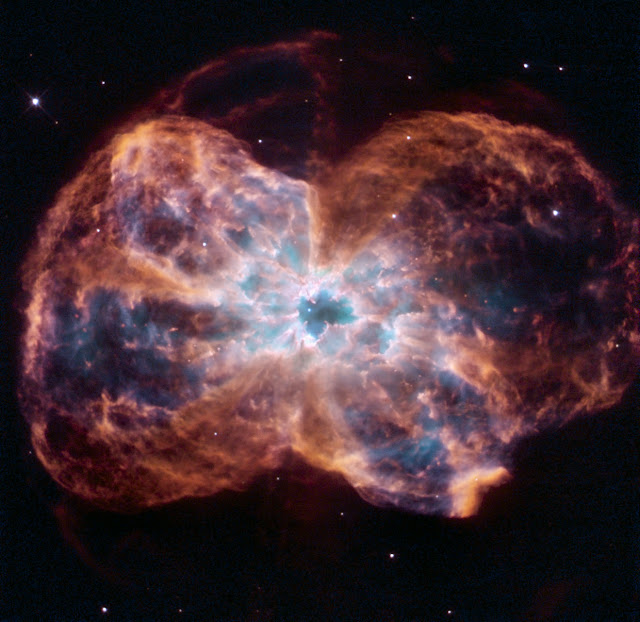The star is ending its life by casting off its outer layers of gas, which formed a cocoon around the star's remaining core. Ultraviolet light from the dying star makes the material glow. The burned-out star, called a white dwarf, is the white dot in the center. Our Sun will eventually burn out and shroud itself with stellar debris, but not for another 5 billion years.
Our Milky Way Galaxy is littered with these stellar relics, called planetary nebulae. The objects have nothing to do with planets. Eighteenth- and nineteenth-century astronomers named them planetary nebulae because through small telescopes they resembled the disks of the distant planets Uranus and Neptune. The planetary nebula in this image is called NGC 2440. The white dwarf at the center of NGC 2440 is one of the hottest known, with a surface temperature of nearly 400,000 degrees Fahrenheit (200,000 degrees Celsius). The nebula's chaotic structure suggests that the star shed its mass episodically. During each outburst, the star expelled material in a different direction. This can be seen in the two bow tie-shaped lobes. The nebula also is rich in clouds of dust, some of which form long, dark streaks pointing away from the star. NGC 2440 lies about 4,000 light-years from Earth in the direction of the constellation Puppis.
The image was taken February 6, 2007 with Hubble's Wide Field Planetary Camera 2. The colors correspond to material expelled by the star. Blue corresponds to helium; blue-green to oxygen; and red to nitrogen and hydrogen.
Image Credit: NASA, ESA, and K. Noll (STScI)
Explanation from: http://hubblesite.org/newscenter/archive/releases/2007/09/image/a/


 About
About Tags
Tags Popular
Popular









0 komentar:
Posting Komentar